
In recent times, paper has suffered unsubstantiated claims about its sustainability. There has been a great deal of misinformation shared about paper over the last 15 years or so, largely coinciding with the growth in digital technology, much of which has been outright greenwashing. We aim to set the record straight by separating fact from fiction and clarifying how you can be sure you are using paper with a clear conscience.
In recent times, paper has suffered unsubstantiated claims about its sustainability. There has been a great deal of misinformation shared about paper over the last 15 years or so, largely coinciding with the growth in digital technology, much of which has been outright greenwashing. We aim to set the record straight by separating fact from fiction and clarifying how you can be sure you are using paper with a clear conscience.
Sustainable paper products
Greenwashing: Separating fact from fiction
Two Sides, a global initiative which promotes the sustainability of paper, and paper-based packaging, tackles these myths and misinformation and succinctly describes greenwashing as, ‘the practice of making an unsubstantiated or misleading claim about the environmental benefits of a product, service, technology or company practice.
Many companies, including banks and utility providers, have been guilty of misleading their customers by encouraging them to switch from paper to digital billing and statements, with claims such as ‘save trees, go digital’ or ‘move on-line and save the planet’. These claims are misleading on a number of levels: firstly, the European paper industry is responsible for planting more trees than it uses, and secondly, use of digital technology has its own environmental impacts that we should be mindful of.

Let’s delve into the first point a little further. Between 2005 and 2020, European forests grew by 58,390km2 – the equivalent of 1,500 football pitches every day, a net annual growth of more than 2% once the volume of harvested forests has been deducted (Source: Two Sides, ‘Print and Paper, Myths and Facts’). This is significant when you consider that over 90% of the European paper industry’s wood fibre originates from Europe.
What about the environmental impact of the ICT sector?
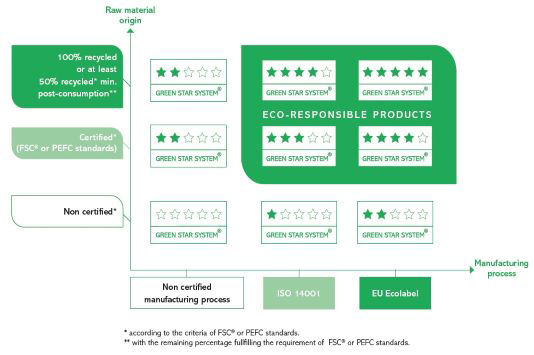
Of course, paper has an environmental footprint, but it is also highly sustainable with 74% of paper used in Europe being recycled. It’s important to note, however, that paper fibres cannot be recycled indefinitely, so there always needs to be a steady supply of virgin fibres, from sustainable sources, added into the mix for paper recycling to be possible.
Addressing the second point above, the Information and Communication Technology (ICT) sector poses significant recycling challenges. In 2019, the industry produced 53.6 million metric tonnes (Mt) of e waste across the world, an increase of 21% over the past five years. It is also a large contributor of greenhouse gas emissions and it is estimated that the sector could use as much as 51% of global electricity in 2030 and contribute 23% of global greenhouse gas emissions (Andrae and Edler, 2015).
The paper, pulp and print sector, by contrast, is one of the lowest industrial emitters of greenhouse gasses, accounting for 0.8% of European emissions (CEPI, 2019).
We’re not looking to knock tech – we all use it, after all – but it is important to dispel the myths and misinformation that has led many to doubt paper’s sustainability. Nowadays, more than ever, we each have a responsibility to question the origins and environmental footprint of what we consume, and that includes both our digital and paper consumption.
Helping you identify the most environmentally friendly paper products
It’s something we’re very conscious of at Antalis and in order to communicate the environmental credentials of our papers simply and effectively, we developed our Green Star System™ in 2014. Using a universally recognised matrix to rank paper products, the system enables customers to quickly and easily assess the eco-responsibility of products, assisting in making informed paper choices.
By incorporating vital information about the origin of the fibre and the manufacturing process, Antalis’ Green Star System™ attributes each paper product a star rating from zero to five, based on its environmental performance. For example, five-star rated Cyclus Offset is a 100% recycled, natural white, uncoated range of papers. The production of Cyclus is based on an extensive recycling concept, which ensures the lowest environmental impact and supports green and sustainable growth. This results in a natural shade of paper, made without any whitening chemical compound. In addition, the production process generates zero waste to landfill.
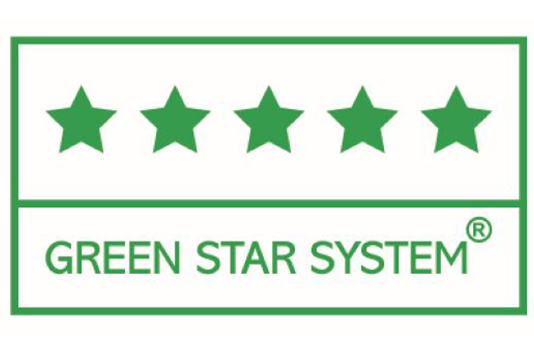
Similarly, Cocoon Offset, a range of 100% recycled, FSC certified papers with an ultra-smooth surface and excellent printability, also has a five-star rating. Cocoon Offset papers are made by turning pre-consumer and post-consumer paper waste into premium quality, bright white recycled paper manufactured in line with the highest environmental processes, using bio-energy.
What's the difference between the many environmental accreditations?
Deciphering the meaning behind the many environmental certifications that exist makes it easier for customers to find a paper that meets their criteria. Products with a rating of three, four or five stars are classified as ‘eco-responsible products’. Within that portfolio, every product will have been produced at a factory with a certified manufacturing process and will be either FSC or PEFC certified or have a minimum of 50% post-consumer waste content.
FSC and PEFC are the most recognised accreditations associated with sustainable paper products in the UK, however, they aren’t the only sources of responsibly produced paper. With multiple organisations and bodies promoting and supporting sustainable forestry, and the production of paper products, there are many certifications and associated logos to look out for - the most commonly used are summarised below:
FSC – the Forest Stewardship Council is an international non-governmental organisation, dedicated to promoting responsible management of the world’s forests. More than 200 million hectares of the world's forests are covered by its certification scheme.

PEFC - the Programme for the Endorsement of Forest Certification™ is an international, non-profit, non-governmental organisation that promotes sustainable forest management through independent third-party certification.
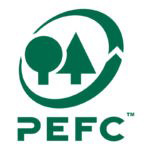
Blue Angel – a German environmental label that has been awarded to particularly environmentally friendly products and services since 1978.
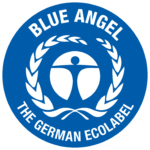
EU Ecolabel - recognised across Europe and worldwide, the EU Ecolabel is a label of environmental excellence that is awarded to products and services meeting high environmental standards throughout their life-cycle: from raw material extraction, to production, distribution and disposal.
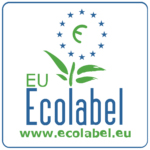
SFI – North American Sustainable Forestry Initiative operates in the U.S. and Canada and works across four pillars: standards, conservation, community and education.
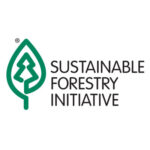
Nordic Ecolabel - the Nordic Ecolabel, also known as Nordic Swan, is the official sustainability ecolabel for products from the Nordic countries.
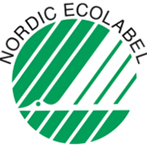
Rainforest Alliance – its little green frog is a symbol of environmental, social, and economic sustainability and can be found on farm and forest products around the world.
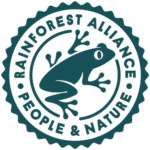
The carbon footprint of paper products

For full transparency, we must also consider the carbon footprint of paper products. This is defined as the greenhouse gas (GHG) emissions emitted during the life-cycle of paper production, converting or printing and distribution. Three basic elements make up paper’s carbon footprint: GHG emissions, carbon sequestration and avoided emissions, each of which is influenced by important characteristics that make paper’s carbon footprint smaller than might be assumed. For example paper is recyclable and comes from a renewable resource that stores carbon and it is produced using mostly renewable energy. As detailed in the latest research by Two Sides, the pulp and print sector is one of the lowest industrial emitters of greenhouse gases, accounting for 0.8% of European emissions.
How can you reduce your environmental impact?
It is reassuring to know that the environmental impact of paper is low, but it is responsible to address this. To help mitigate the unavoidable carbon emissions, Antalis partners with Carbon Balanced Paper and Forest Carbon. We carbon offset multiple brands from our paper portfolio as standard, including the entire creative papers range. In order to help our customers improve their environmental responsibility, we offer two schemes through which positive environmental action is taken:
Forest Carbon – carbon offsetting through the Forest Carbon scheme offers customers the choice of planting new indigenous woodland across the UK and Ireland, or protection of forestry at risk of deforestation in South America.
Carbon Balanced Paper – carbon balancing is facilitated by the World Land Trust, an international conservation charity, with patrons that include Sir David Attenborough, through the preservation of high conservation value forests and the rich biodiversity these native habitats support.



